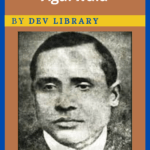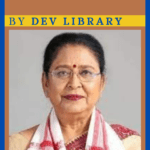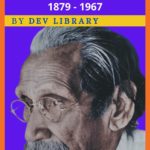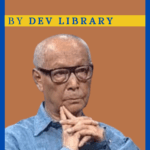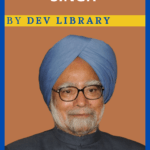India did not got rid of the 200-year rule of the British on the same day. At the heart of it was the effortless spirit and untiring efforts of the freedom-loving peoples. The whole people unitedly started an anti-British revolution and the youth from different parts of greater India, participated in this revolution. In the interest of the country, many young men and women, created a precedent of patriotism by actively participating in this freedom movement. One of the most powerful fighters of the freedom struggle that started against the British and one of the most important person who played a very important role in India’s freedom struggle is Veer Kunwar Singh. At the age of 80, he set an example by fighting against the British with great enthusiasm.
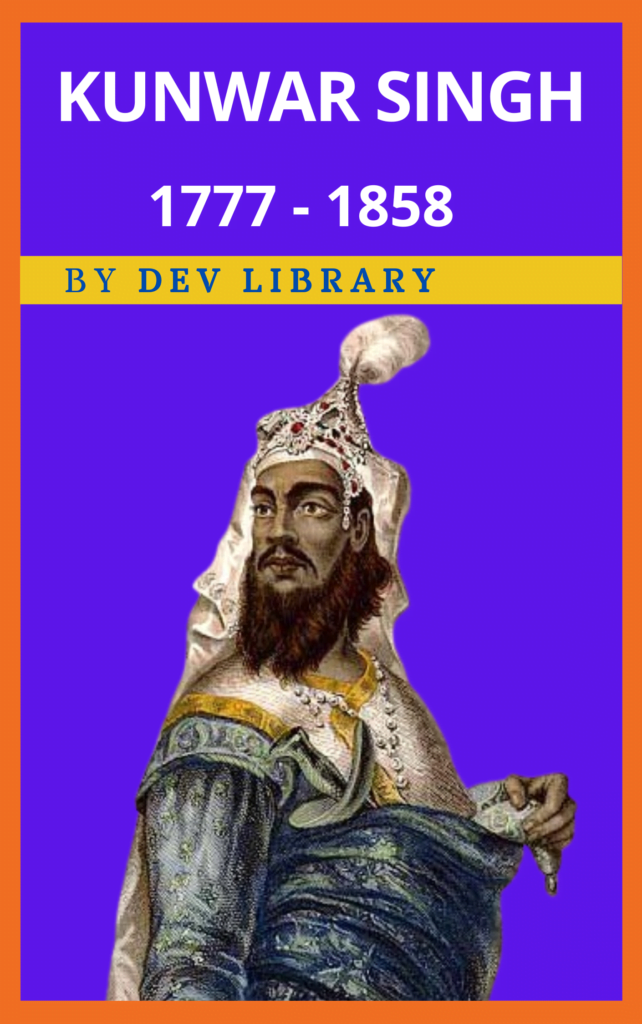
Biography of Kunwar Singh
| Name | Kunwar Singh[1] |
| Date of Birth | November 13, 1777 |
| Place of Birth | Jagdispur (now Bhojpur district of Bihar) |
| Father’s Name | Raja Sahabzada Singh |
| Mother’s Name | Rani Panchratan Kunwari Devi |
| Death | April 26,1858 |
Early Life of Kunwar Singh
Kunwar Singh was born on November 13, 1777, in Jagdispur in Shahabad (now Bhojpur) district of Bihar. Born in the Ujjainiya Rajput dynasty, Kunwar Singh’s father’s name is Raja Sahabzada Singh and mother’s name is Rani Panchratan Kunwari Devi. It is to be noted that a British judicial officer quoted Kunwar Singh as ” a tall man”, who was about six feet tall, had a broad nose, his nose was very pointed. It is to be noted that Kunwar Singh loved hunting as well as riding a horse. Singh was particularly popular in the public by the name of Veer Babu Kunwar Singh and Veer Kunwar Singh.
After the death of his father, Singh took over as the “taluqdar” of Jagdispur in 1826. His brothers inherited some villagers however a dispute arose as to their exact allocation. This dispute was eventually settled and the brothers seemingly returned to having cordial relations. Kunwar Singh was married to the daughter of Raja Fateh Naraiyan Singh, a wealthy zamindar of Deo Raj estate of the Sisodia Rajput dynasty in Gaya district.
Also Read: Biography of Ashfaqulla Khan
Kunwar Singh’s Role in Sepoy Mutiny (1857 Revolt)
Konwar Singh was one of the most powerful leaders of the Sepoy Mutiny, which was initiated in 1857 for India’s independence against the British. The Sepoy Mutiny was the first struggle for India’s independence. On May 10,1857, the Indian Army launched its first revolt against the British East India Company in Meerut.
The mutiny erupted when the Indian Army refused to use cartridges of the new rifle. Because the opening of the cartridge had to be torn with the teeth before the bullet was fired. As soon as this weapon became popular in India, there were reports that the opening of the cartridge was made of cow-pig fat. This led to the loss of caste by both Hindu and Muslim armies. Because in Indian society Cow as food for Hindus and pigs are religiously forbidden for Muslims. While most of the Indian soldiers refused to use rifles in the desire to destroy their religion, the British repeatedly pressured them to use rifles. This led to anger in the minds of The Indian soldiers against the British.
It may be recalled that on March 29, 1857, an Indian soldier named Mangal Pandey encouraged other soldiers to rebel against British officers and attacked British officers. Mangal Pandey was hanged on April 7, 1857, at the age of 29, after the end of the trial proceedings by producing him in court for daring to attack the English. Mangal Pandey was the first martyr of India’s freedom movement. After the death of Mangal Pandey, rebellion quickly spread to different parts of India including Meerut, Delhi, Lucknow, Jhansi, Gwalior.
It is important to note that at this time many zamindars and local leaders of India supported the British, while others supported the rebellion that began to bring India’s independence back. But Kunwar Singh, who was serving as the zamindar of Jagdispur at that time, was a man who led the revolt from the front. It may be recalled that Singh led the Sepoy Mutiny from Bihar. He was nearly eighty years and in falling health when he was called upon to take up arms.
At that time, the rebel soldiers of Danpur, Chhota Nagpur, Manbhum, Singhbhum, Palamu, etc., also supported the freedom struggle under the leadership of Kunwar Singh. The Bengal Native Infantry, who travelled from Danapur, along with the regiments number 7, 8 and 40, along with Kunwar Singh and other rebels supporting him, occupied the district headquarters of the British at Arrah in Bihar on July 27. But The Major General Vincent Eyer, who was heading toward Allahabad, received a message from the British to lay siege to the district headquarters in Bihar and marched to Arrah in Bihar, opposing the rebels’ actions. Subsequently, on August 3, the forces of Major General Vincent Eyer defeated Kunwar Singh’s and destroyed Jagdispur and his associates. The General Vincent Eyer army looted Jagdispur and tried to destroy the palace of Jagispur. It is to be noted that Kunwar Singh, who was skilled in guerrilla warfare, managed to escape from the British for about a year. His tactics left the British puzzled.
Importantly, he was 80 years old when he fought against the British. There is nothing else to do with the courage, honesty, and patriotism of Kunwar Singh, who has worked tirelessly for India’s freedom in the twilight of his life. Singh did not stop even after losing to Major General Vincent Eyer. The struggle against the British was taken out of Bihar and efforts were made to counter the British with the help of insurgent organisations from other parts of India including Gwalior, Lucknow, Kanpur.
It may be recalled that in September 1857, Kunwar Singh made an attempt to enter Rewa in Madhya Pradesh and subsequently he later travelled to Banda in Uttar Pradesh. It was from Banda that he went to his associate Nishan Singh Kalpi and joined the Gwalior troops and made efforts to capture Kanpur. However, they were defeated by the British.
But despite the defeat in the battle, Konwar Singh travelled towards Lucknow with a strong morale. In March 1858, he joined his fellow colleagues in Atraulia, Azamgarh and managed to repel the initial British attempts to take the area. However he had to leave the place soon. British Lt General George Bryan Milman and Colonel tried to transfer Kunwar Singh to no avail. Singh attacked the weakest position of the British, due to which the flames of rebellion were burning and he kept Azamgarh under his control. Subsequently, Lord Mark Kerr and Sir Edward Lingard left for Ghazipur after receiving a message sent by the British to free Azamgarh from the leadership of Kunwar Singh.
Importantly, while trying to cross the Ganges to retake Jagdispur, Kunwar Singh fought with the British troops under Brigadier Douglas in April 1858. Singh was shot at by British soldiers in this battle. With immense courage, Singh drew his sword and cut off his left hand near the elbow so that the infection caused by a bullet injury on his arm did not spread to the rest of his body and offered his hands to the Ganges.
The British armed forces led by Jagdispur Captain Le Grand were ready to take on the soldiers led by Kunwar Singh. However, Singh defeated the British with his clever performance. Around 130 people including Captain Le Grand were killed by the Indian army led by Kunwar Singh. But Singh, tired of exhaustion and relentless fighting, did not have the fate of longevity. He breathed his last on April 26,1858, winning the last battle.
Death
In his last battle, fought on April 23 1858, near Jagdispur, the troops under the control of the British East India Company were completely routed. On 22 and 23 April, he fought against the British Army with the help of his army drove away the British Army, brought down the the Union Jack from Jagdispur Fort and hoisted the flag. Around 130 people including Captain Le Grand were killed by the Indian army led by Kunwar Singh. He returned to his palace on 23 April 1858, tired of exhaustion and relentless fighting, did not have the fate of longevity and soon he died on 26 April 1858.
Conclusion
On April 23, 1966, the Government of India issued a postage stamp to honour the contribution of Kunwar Singh in India’s Freedom Movement that started against the British. The Bihar government established the Veer Kunwar Singh University at Arrah in 1992.
Apart from this, the Veer Konwar Singh Bridge, popularly known as Arrah-Chhapra Bridge, was inaugurated in 2017 to connect North and South Bihar. In 2018, in order to celebrate the 160th anniversary of Kunwar Singh’s death, the Bihar government transferred one of his statues Hardinge and formally renamed the park as ‘Veer Konwar Singh Azadi Udyan’. It is to be noted that his life story as a hero fighting against British atrocities is mentioned in many Bhojpuri folk songs.
Importantly, while Veer Kunwar Singh was lesser known among the general public, his contribution to the anti-British struggle was immense. Singh tried to create a trend of freedom in the minds of many. He rebelled against the British and inspired everyone to fight for their right.
FAQs
1. When and where was Kunwar Singh born?
Ans: Kunwar Singh was born on November 13, 1777, in Jagdispur in Shahabad (now Bhojpur) district of Bihar.
2. By what name was Kunwar Singh popularly known as?
Ans: Veer Babu Kunwar Singh
3. What is the father’s name of Veer Kunwar Singh?
Ans: Raja Sahabzada Singh.
4. What is the mother’s name of Kunwar Singh?
Ans: Rani Panchratan Kunwari Devi.
5. When did Veer Kunwar Singh took over as Taluqdar of Jagdispur?
Ans: Singh took over as the “Taluqdar” of Jagdispur in 1826.
6. Who was the successor of Kunwar Singh?
Ans: Baby Amar Singh was the successor of Veer Kunwar Singh.
7. From where did Kunwar Singh led the Sepoy Mutiny?
Ans: From Bihar, Singh led the Sepoy Mutiny.
8. When did Kunwar Singh breathed his last?
Ans: He breathed his last on April 26,1858, winning the last battle.

Hi, I’m Dev Kirtonia, Founder & CEO of Dev Library. A website that provides all SCERT, NCERT 3 to 12, and BA, B.com, B.Sc, and Computer Science with Post Graduate Notes & Suggestions, Novel, eBooks, Biography, Quotes, Study Materials, and more.


